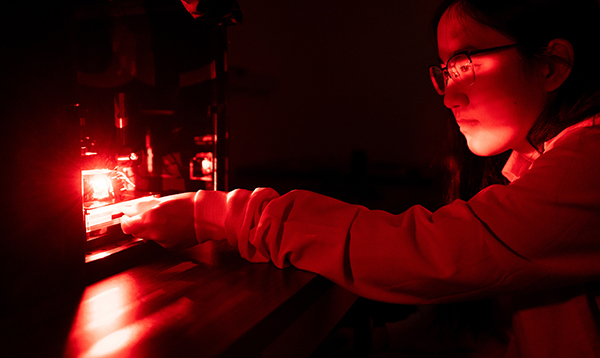
Unlocking the brain with the fruit fly
University of Washington undergraduate Mary Bun's research centers on an important question: How do neural circuits manage multitasking? Using optogenetics — a technique that uses light to activate specific neurons — she studies how fruit flies perform tasks like walking and vibrating their wings at the same time. The work could offer valuable insights into disorders like Parkinson’s disease.
Mary Bun’s fascination with how things work began long before middle school. Driven by a natural curiosity for problem-solving, she knew early on that, like her brothers, she would apply to the Transition School at the University of Washington’s Robinson Center, the Center’s one-year college preparatory program for high-achieving students.
“I wanted a challenge,” Bun recalls. “The traditional high school experience didn’t feel like it would push me enough. I needed something more.” The Transition School provided an immersive environment with advanced coursework, allowing her to transition early to the UW. “I could move quickly and start thinking about research much earlier.”
Bun’s time wasn’t just academic — it helped her find a community of other highly motivated peers. “Fifteen is such a critical period in your life,” she says. As she began her college journey, “the world had been turned upside down” with the coronavirus pandemic. During the pandemic, Bun found support in her cohort, navigating the challenges of remote learning and isolation together. “The Transition School gave me the tools to succeed, but it was the people who made it meaningful.”
 Check out the full article: Unlocking the brain with the fruit fly
Check out the full article: Unlocking the brain with the fruit fly